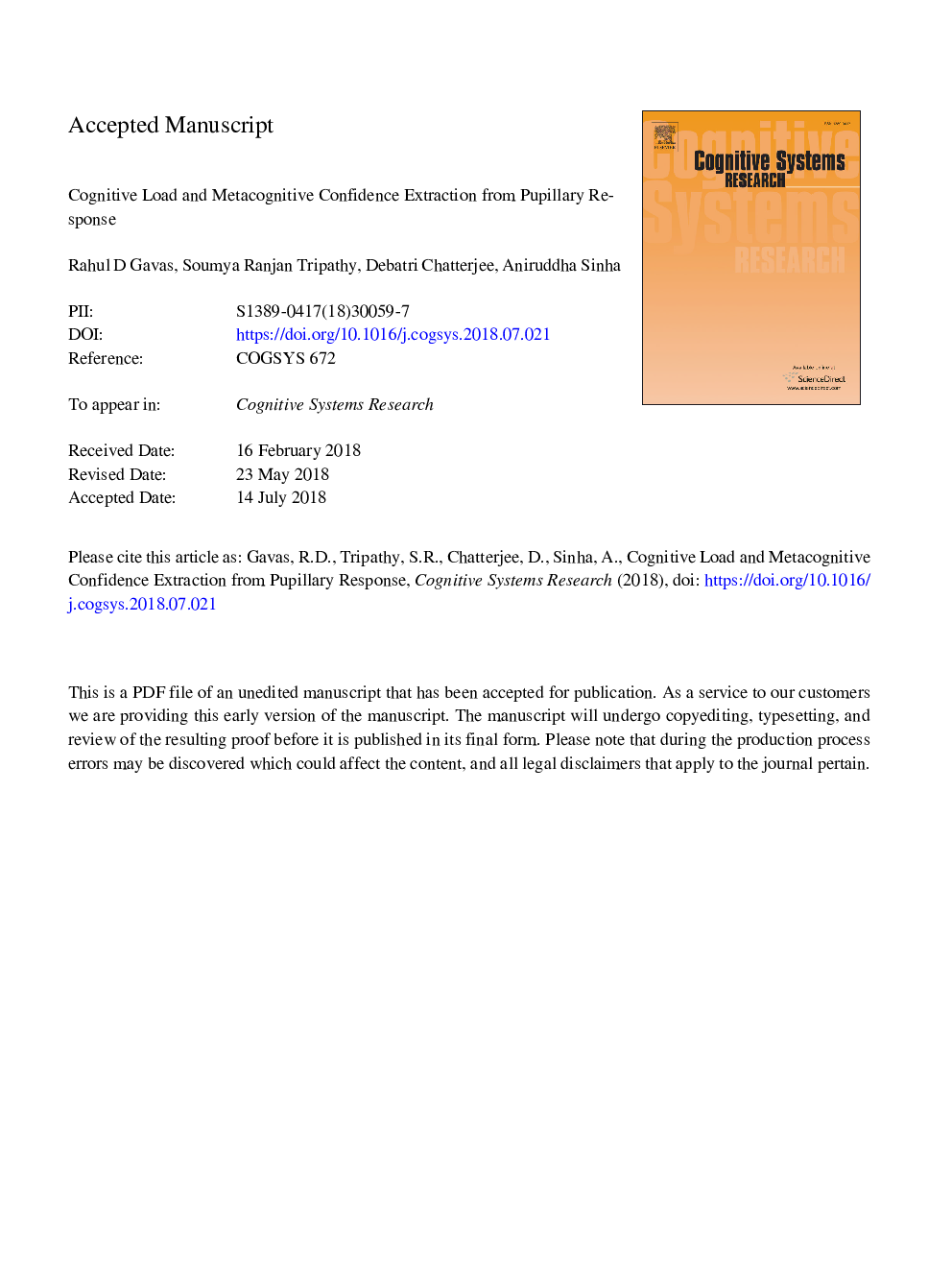| Article ID | Journal | Published Year | Pages | File Type |
|---|---|---|---|---|
| 6853651 | Cognitive Systems Research | 2018 | 26 Pages |
Abstract
Spontaneous pupillary fluctuations are indicative of the cognitive load imposed while doing a task involving memory resources. However, the fluctuations are also dependent on other factors like lighting conditions, uncertainty or the level of confidence while performing the task and so on. This paper aims to separate various components of pupillary response in order to assess the cognitive load and the confidence with which the task is performed. Hybrid decomposition models using ensemble empirical mode decomposition followed by independent component analysis is found to effectively reconstruct the original signal. The variational Mode Decomposition has been used in order to overcome the limitations imposed by empirical mode decomposition. Results show that variational mode decomposition outperforms existing state-of-the-art methods. Further, we attempted to identify the hidden components of pupillary response during cognitive tasks like mental addition and the anagram test. We obtained Fscore of 0.67 in the detection of cognitive load and Fscore of 0.99 for the detection of confidence level from the single channel pupil data.
Related Topics
Physical Sciences and Engineering
Computer Science
Artificial Intelligence
Authors
Rahul D. Gavas, Soumya Ranjan Tripathy, Debatri Chatterjee, Aniruddha Sinha,
